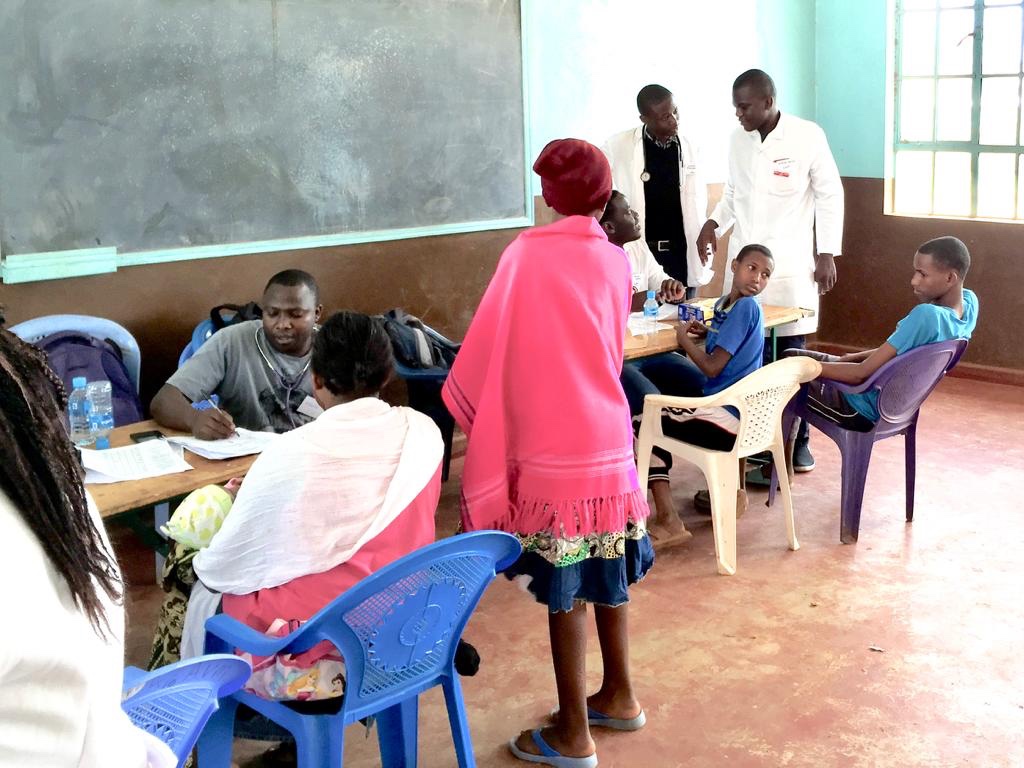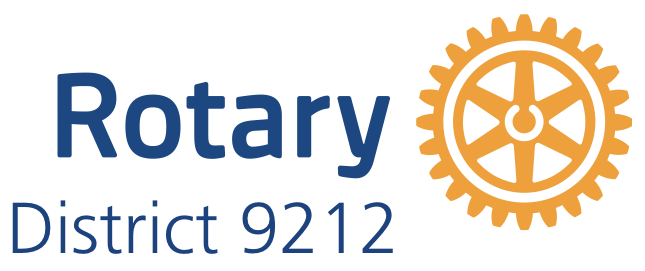New Member Shares Ideas to Improve Medical CAMPS

Soon after I joined the Rotary Club of Gachie I was please to learn that a trip had been planned for a medical camp in Voi which included a tree planting event. I saw this as an opportunity to get involved as part of my induction and I picked up a few lessons for improving the impact of medical camps.
We started off with the tree planting in Mwanyambo Primary School in Voi, and then proceeded to Tausa, which is just a few kilometres before Voi town. It took us just 10 minutes to reach the main health center where the camp was being held. As soon as we arrived, I knew it was going to be tough because a large crowd had formed long lines that stretched beyond the gate.
My first assignment was to triage the crowd and show people where they should go after they got their blood pressure or glucose measured. I struggled to control people, including the elderly, who were trying to be crafty and jumping the queue.
Soon after, I was reassigned to serve as a translator. A foreign doctor from the Rotary Club of Kampala Muyenga Breeze, with whom we had collaborated with for the medical camp, was struggling to communicate with the patients who mostly spoke in Kiswahili. This was a challenge because my Kiswahili is limited. I had to help the patients articulate their problems to the doctor and in return pass the doctor’s advice or questions back to them.
During lunch hour we bonded with the camp organisers, the Rotary Club of Kampala Muyenga Breeze and our mother club, Rotary Club of Nairobi North.
After lunch, we continued with the medical camp. During breaks, I got to play with the doctor’s ‘toys’ and even learnt how to use the blood pressure measuring kit to help keep the crowd momentum going.
I also learnt how to write some ‘medic’ – the shorthand that doctors use when noting down a patient’s summary. Did you know that ℅ = Complaint and HTN = Hypertension? We even managed a case where a patient’s blood pressure was so high (220/160+) that he was advised to immediately drink a glass of water before proceeding to the next check-up. Magically, the water helped reduce his pressure to pre-hypertension status!
The camp was supposed to end at 4pm but we didn’t close until 6pm after having successfully seen 550 patients. We then headed back to our hotels to freshen up and before dinner where we discussed ways to improve the medical camp processes. Thereafter the Ugandans showed the Kenyans dust in unwinding and having fun – and the fun continued beyond 2am!
The most special thing for me was hearing how grateful the community was as they departed, having been checked and treated by the medical staff. It taught me the true service spirit of Rotary; we did good without expecting anything in return.
Lessons learned
- To reduce travel and arrival logistics, arrive at the venue the night prior to the medical camp or arrive jointly as a group.
- There is never enough medical equipment (such as blood pressure and glucose measuring kits). Always carry as many as possible!
- Carry out a needs assessment prior to the camp to determine the medication needed in the labs.
- The more technical experts available the better. The doctors from Rotary Club of Kampala Muyenga Breeze suggested that we make use of army and government doctors.
- Print out signage in large bold fonts in both English and Swahili, even in local dialects if possible.
- Limit access to the testing area to avoid crafty people jumping queues.
- Share the results and findings from the camp with the local authorities. For example, we found alarmingly high cases of hypertension and diabetes in the area which could suggest a pre-existing trigger; the doctors suspect salty water and sugary foods such as ‘kaimati’.
- The host club should do as much as they can to welcome visiting Rotarians from outside the country, such as hosting them in their own homes and holding bonding activities after the camp, such as a dinner.
- Branding is important and should be used to spread the word about Rotary
I can’t wait for my next project!




